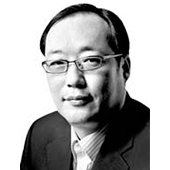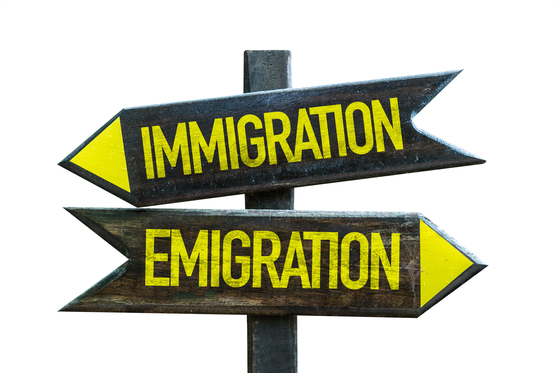Still shutting doors to foreigners

Choi Hoon
The author is the chief editor of the JoongAng Ilbo.
International migration has become a keyword in the post-pandemic period. Countries are warring to open their borders and invite more foreign workers as they struggle with labor shortages after lengthy lockouts, stagnant growth, soaring wages and prices, low birthrates, and quickly aging society amid sticky inflation.
Germany has passed a radical new law to attract skilled migrant workers, enabling them to stay in the country to look for a job for up to a year. They can bring not only their spouse and children but also their parents. Canada plans to accept 500,000 immigrants each year until 2025 in hopes to make up for its labor shortage of around 1 million. It is accepting holders of H-1B work visas issued by the United States to migrant foreign workers with specialized skills in computers and IT to steal foreign talents from the United States.
The immigration wave accelerated from late last year. Britain accepted 1.2 million foreigners — the largest-ever — last year as Hong Kong citizens fled from China’s oppression and Ukrainians from their war-torn country. It is a dramatic reversal for the British, who chose to divorce from the European Union on anti-immigration sentiment. Net migration — or the number of immigrants minus emigrants — to Australia and Canada has doubled from the pre-pandemic period. The tally for Spain also hit a record high. Nearly 1.4 million net are expected to move to the United States, one-third more than before the pandemic.
Korea remains oblivious to the trend, although its population is thinning fast. If its world-low birthrate at 0.78 does not rise, the Korean population would shrink by 26.7 percent to 37.65 million by 2070. Foreigners make up just 3.2 percent of the population, or 1.64 million, and multi-racial families just 1.7 percent of all households in Korea.

Homogeneity should no longer be a symbol of pride. However, according to a survey by Statistics Korea, out of 10 points, Koreans scored 5.3 on accepting foreigners as Korean citizens. They were more inclined to accept them as their work peers (42.3 percent) and neighbors (29.8 percent), but not as friends (16.6 percent) or as a spouse (1.3 percent). As much as 10.1 percent refused to accept foreigners as the same as Korean citizens in any case.
The historical roots may run deep. According to the records of Hendrick Hamel in “Hamel’s Journal and a Description of the Kingdom of Korea 1653-1666,” the Dutch sailor who gave the first Western account of the Korean people while living in the country discovered that the people of Joseon knew of just 12 other countries and believed the Chinese emperor ruled over the world. Scottish artist Constance Tayler, who had briefly stayed in Korea in the late Joseon era, did not find that Koreans had a natural hostility toward foreigners as the Chinese. She blamed the government’s inward policy for the country’s moniker of being a hermit kingdom.
Dutch sailors who were confined to Joseon after they were shipwrecked — for instance, Hamel and Jan Janse de Weltevree who arrived earlier and adopted the Korean name Park Yeon — were both employed for their knowledge of firearms. While living in exile in Jeju, Hamel was brought to the court as the royal guard because he and his crew knew how to deal with canons, according to the records of King Hyojong. Park Yeon, who had children with a Korean wife, commanded a foreign army and contributed to building canons as well as fighting a war against the Qing Army. Korea is not without a history of migrant workers.
Korea must overhaul its immigration policy, which currently centers on migrant workers for farming, fishing, restaurant staff and low-skilled manufacturing and healthcare. The country must also invite the super-rich and highly-skilled so that their technology, capital and consumption can contribute to the economy.
Singapore may be the best example. The country is famous for its education infrastructure with a number of reputable international schools and world-class higher education institutions like the National University of Singapore, which is Asia’s No. 1 and the world’s 11th best, and Nanyang Technological University. Most people are bilingual, fluent in English and Chinese. Family business is common and easy to start in Singapore. Although its maximum corporate tax rate is 17 percent (still lower than Korea’s 24 percent), a 75-percent exemption is provided for the first taxable income. Other taxes — on capital gains, transfers, dividends, gifts, and inheritance — are negligible.
What should be the most envied is the city state’s international politics. It maintains amicable relationships with both the United States and China. Its merit as a “safe neutral” has emerged amid the intensifying U.S.-China conflict. In Asia, a relationship with China cannot be neglected. Russia, China, India, Hong Kong and Ukraine top the list in the diaspora of the wealthy. For the rich, political stability is crucial for the security of their wealth.
Korea has many merits — it has one of the world’s best, affordable medical care, good public security, rich culture, food and super-fast delivery. It is 138 times bigger than Singapore. The downsides are the North Korean risk, heavy regulations, high taxes and inflation, strikes, and education quality. The government must immediately set up an immigration ministry or population ministry. A foreign expert could be the first head. Korea must be engaging to immigrants who can be valuable assets to the country. Korea must become an immigration magnet if it does not want to see the country disappear from the map due to its ultralow birthrate.










with the Korea JoongAng Daily
To write comments, please log in to one of the accounts.
Standards Board Policy (0/250자)